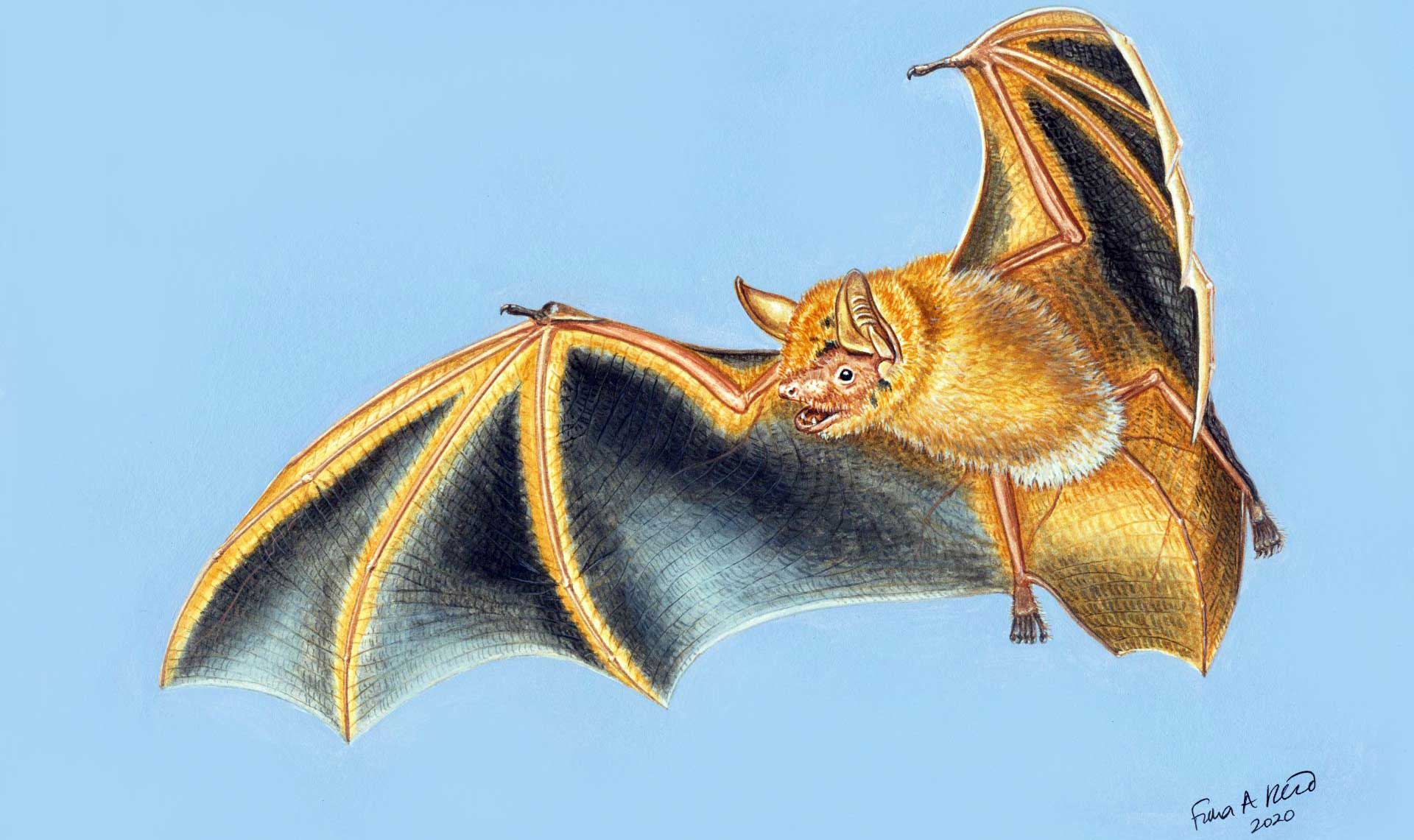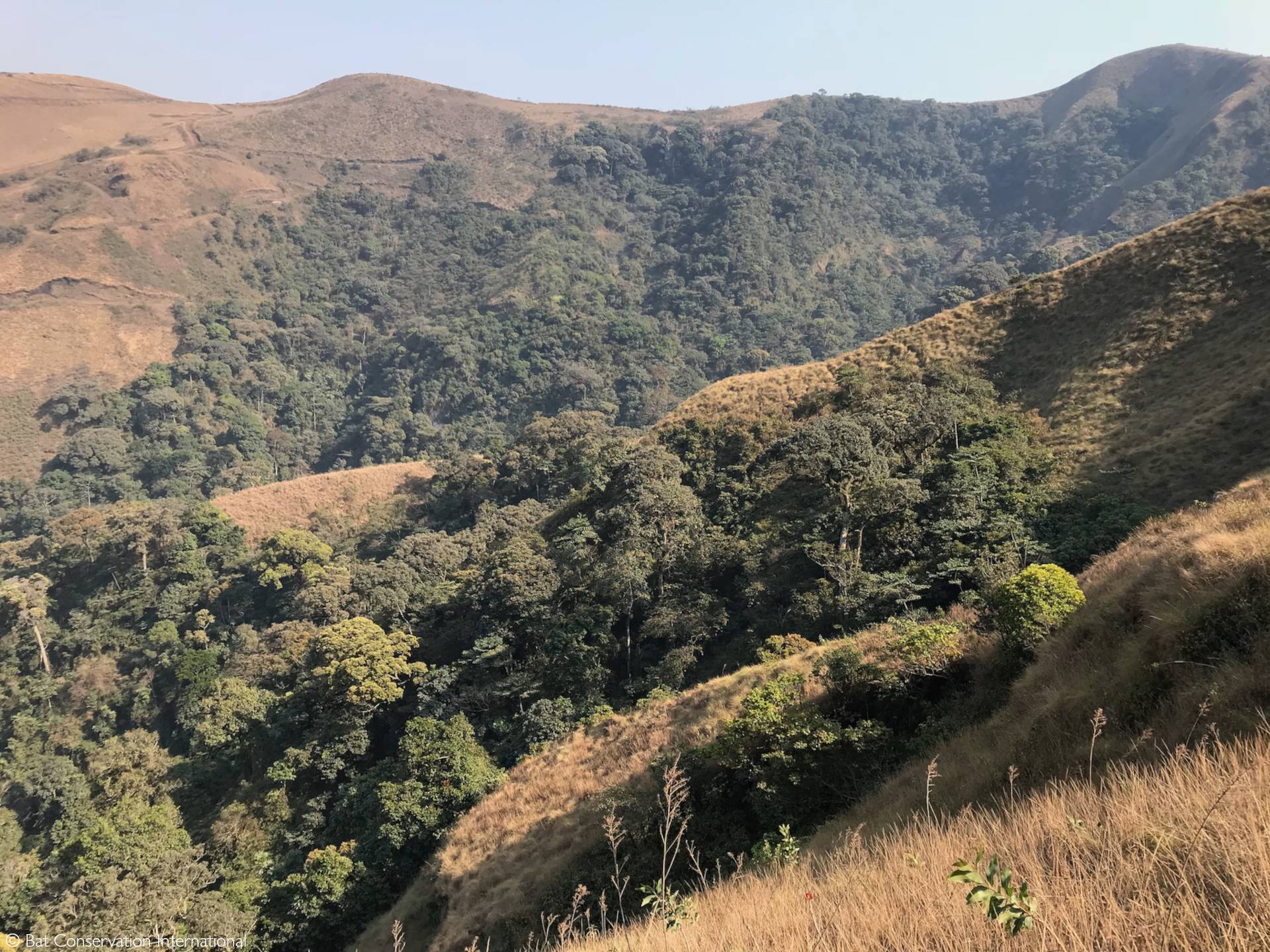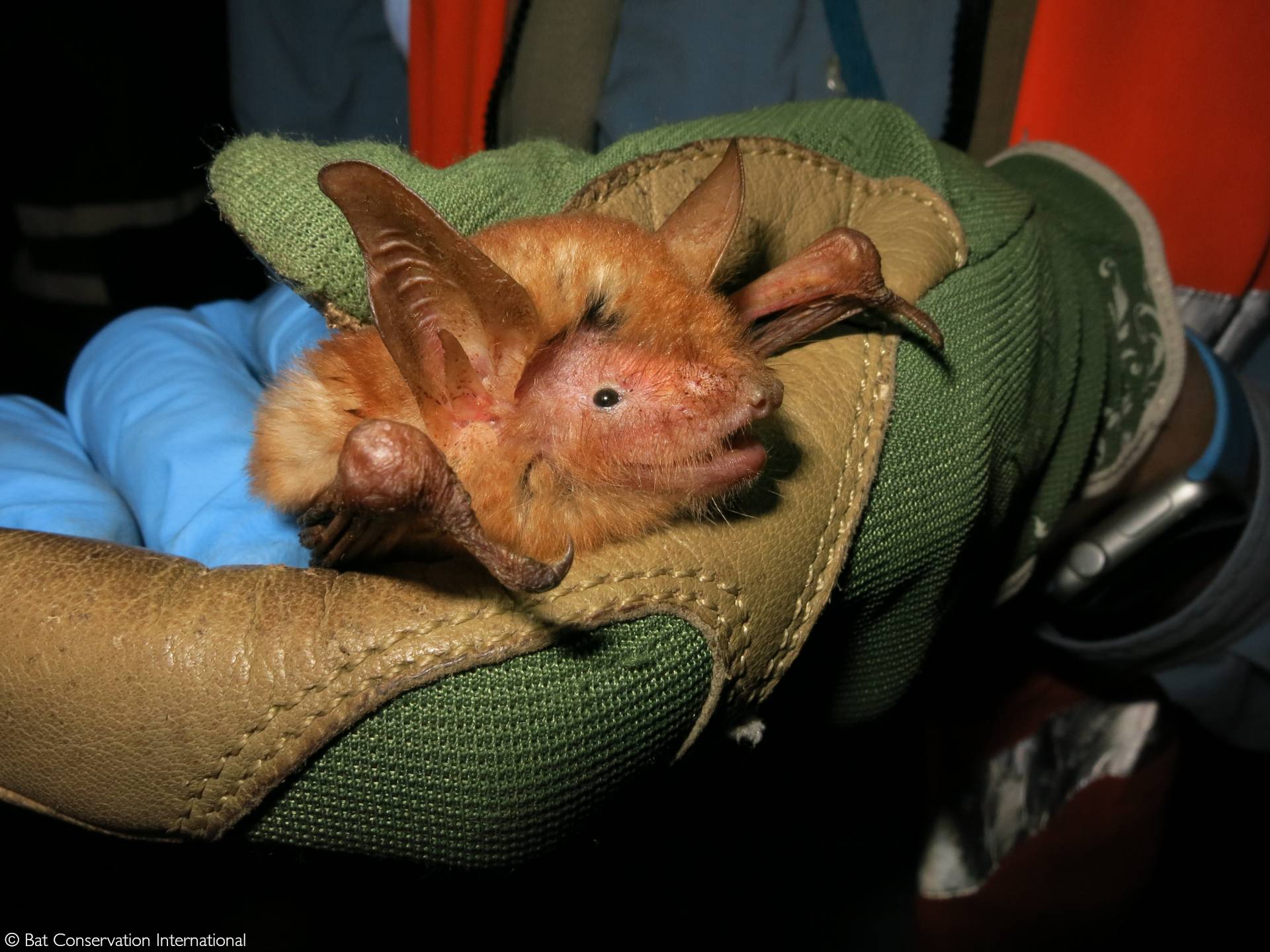
With bright orange fur and black wings, Myotis nimbaensis is unlike any other bat on earth.
In 2018, an international team of experts climbed into the Nimba Mountains of Guinea in search of the Lamotte’s roundleaf bat. The species is exceedingly rare—known from just a single mountain and considered critically endangered by the International Union for Conservation of Nature. Little did the scientists know that in searching for the dwindling mammal, they’d soon come face to face with something even more extraordinary—a bat species no one had ever seen before.
While most people would reach for the black or brown crayon when sketching a bat, the new species sports rusty orange fur reminiscent of an orangutan and ink-black wings streaked with auburn veins and finger bones.

“The bat is just particularly spectacular,” says Dr Winifred Frick, chief scientist at Bat Conservation International and an associate research professor in Ecology and Evolutionary Biology at the University of California, Santa Cruz.
In truth, it’s not all that uncommon for scientists to discover a new species these days, nor even a new mammal, but a lot of these findings are actually what you’d call “taxonomic revision,” says Frick. In other words, sometimes two animals look so superficially similar, they were originally thought to be the same. However, advances in genetics are allowing scientists to make finer distinctions between species than ever before.
For example, researchers at the California Academy of Sciences described more than 200 new species of plants and animals in 2020–and that’s just a single institution! All told, some scientists estimate that 86 percent of all life on earth has yet to be described. But of all the animal species on earth, around 97 percent are invertebrates, with 1.25 million species described so far and perhaps as many as another 30 million species out there waiting to be discovered. And while North America and Europe have been pretty thoroughly documented, the tropics still teem with undescribed plants and animals.
Of course, this is why the case of the new bat is so striking. Called Myotis nimbaensis, and described for the first time in the January issue of American Museum Novitates, this bat started raising eyebrows from the minute it flew out of an abandoned mine and into a harp trap. (Harp traps look like the musical instrument, but allow scientists to safely capture bats using a row of fine strings.)
There are other orange bats in the world, but something about this new specimen was off. Several of the scientists spent all night sifting through resources called taxonomic keys that can be used to identify one species from another. When they met the next morning for breakfast, they agreed that the specimen did not fit the description of any other species. It was time to call in backup.

“At that point, I started getting text messages from Africa,” says Dr. Nancy Simmons, curator in charge of the Department of Mammalogy at the American Museum of Natural History in the United States.
While the researchers in the field continued trying to collect more specimens, Simmons started scouring her museum’s records for anything that came close to the new bat back in New York City. She also travelled to the Smithsonian National Museum of Natural History in Washington, D.C. and the British Museum of Natural History in London to see if they had anything that might be a match. But in the end, nothing compared.
“When it came down to it, I was sure it was a new species,” says Simmons, who is also Chair of the IUCN’s Global Bat Taxonomy Working Group.
In addition to the bat’s physical characteristics, the researchers also compared the animal’s DNA and echolocation calls to other closely related species. “Those are three completely different lines of evidence that all converge on the same answer, which is that this is a different species,” says Simmons.
Not much is known about M. nimbaensis yet, though the researchers believe the species is only found in the Nimba Mountains, a range that straddles Guinea, Côte d’Ivoire, and Liberia. At just 40 kilometres in length, the Nimba Range is known as a hotspot for biodiversity—its high altitude peaks serving as “sky islands” for other rare wildlife, from West African lions and pygmy hippos to the zebra duiker and western chimpanzee.

Based on the bat’s closest cousins, the scientists suspect it preys upon small insects and roosts underground in caves. And because it was found flying out of an old mining tunnel, it seems likely that these human-made habitats may be crucial to the species’ continued existence. Around a dozen exploratory mineshafts already exist in this area, drilled in the 1970s and 1980s in search of iron ore deposits.
“It is well known that the biodiversity of the Nimba Mountains is under severe threat,” says Bakwo Fils Eric Moise, a zoologist at the University of Maroua in Cameroon and coauthor of the new paper, alongside Frick and Simmons.
Fortunately, the mining company that owns the land the bat was discovered on has been a willing partner in taking stock of and working to protect species endemic to this area. In fact, the scientists’ work in Guinea has been done in conjunction with an outfit called Société des Mines de Fer de Guinéa. And because many of these tunnels, called adits, are now beginning to collapse, the company is also partnering with Bat Conservation International to excavate new shafts. The idea is to create a habitat for the Lamotte’s roundleaf bat—which the scientists did manage to relocate on the fateful expedition—but the project will likely benefit the new orange bats, too.
“A discovery like this can be used as an additional argument to develop sustainable in-country programs for research and conservation,” says Moise.
So not only is the new bat a super exciting breakthrough for science, but the attention it’s garnered might just do some good for its neighbours too.
Resources
Read more on the importance of bats
Read about the Kasanka bat migration in Zambia – the world’s biggest mammal migration
To comment on this story: Login (or sign up) to our app here - it's a troll-free safe place 🙂.![]()








